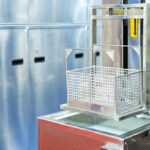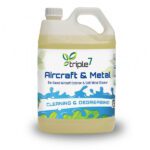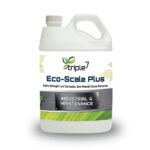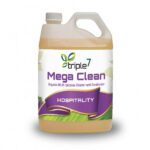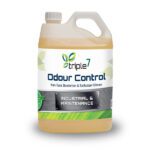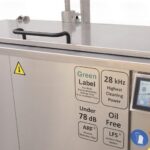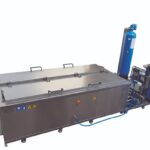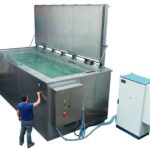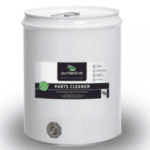Table of Contents
Introduction:
Ultrasonic cleaning technology has revolutionized the way industries approach cleaning, providing a highly effective method for removing contaminants from various items. At the heart of this technology are transducers, which convert electrical energy into ultrasonic waves. Recently, the introduction of multi-frequency transducers has taken ultrasonic cleaning to the next level, offering enhanced cleaning efficiency and versatility. This blog will guide you through the steps to implement multi-frequency transducers in ultrasonic cleaners to achieve superior cleaning results.
Understanding Ultrasonic Cleaning and Transducers:
Basics of Ultrasonic Cleaning:
Ultrasonic cleaning involves the use of high-frequency sound waves to create cavitation bubbles in a cleaning solution. These bubbles implode upon contact with the surfaces of items, effectively removing contaminants such as dirt, grease, and biofilm. This method is widely used in industries like healthcare, manufacturing, and electronics for its precision and thoroughness.
Role of Transducers in Ultrasonic Cleaners:
Transducers are critical components in ultrasonic cleaners, responsible for converting electrical energy into the ultrasonic waves that drive the cleaning process. Single-frequency transducers operate at a fixed frequency, which may not be ideal for all cleaning tasks. In contrast, multi-frequency transducers can operate at different frequencies, offering greater flexibility and control.
Benefits of Multi-Frequency Transducers:
Enhanced Cleaning Efficiency and Effectiveness:
Multi-frequency transducers can switch frequencies, allowing for more effective removal of various contaminants. Low frequencies are better for larger particles and heavy contaminants, while high frequencies are more suited for fine particles and delicate items.
Improved Versatility for Different Cleaning Tasks:
The ability to adjust frequencies makes multi-frequency transducers versatile, accommodating a wide range of cleaning requirements. This is particularly beneficial in industries where diverse items need cleaning.
Reduced Risk of Damage to Sensitive Items:
By allowing precise control over cleaning intensity, multi-frequency transducers reduce the risk of damage to sensitive items. This is crucial in industries like healthcare and electronics, where delicate components are cleaned.
Greater Control Over the Cleaning Process:
Multi-frequency transducers provide greater control over the cleaning process, enabling fine-tuning cleaning parameters for optimal results. This leads to more consistent and reliable cleaning outcomes.
Steps to Implement Multi-Frequency Transducers in Ultrasonic Cleaners:
Assessing Cleaning Requirements:
Before implementing multi-frequency transducers, it is essential to understand your specific cleaning needs. Identify the types of contaminants you need to remove and the materials you are cleaning. This assessment will guide you in selecting the appropriate ultrasonic cleaner and transducer settings.
Selecting the Right Ultrasonic Cleaner:
Choosing an ultrasonic cleaner with multi-frequency capabilities is crucial. Consider factors such as tank size, power output, and frequency range. Ensure that the cleaner can accommodate the items you need to clean and that it offers the flexibility to adjust frequencies as needed.
Installing Multi-Frequency Transducers:
If you are upgrading an existing ultrasonic cleaner, follow these steps to install multi-frequency transducers:
– Turn off and unplug the ultrasonic cleaner.
– Remove the old transducers carefully, ensuring not to damage any components.
– Install the new multi-frequency transducers, aligning them properly with the tank.
– Connect the transducers to the ultrasonic generator, following the manufacturer’s instructions.
– Test the installation to ensure the transducers are functioning correctly.
Setting Up Frequency Parameters:
Once the transducers are installed, set up the frequency parameters. Start by selecting a frequency range based on your initial assessment. Conduct tests to determine the optimal frequency settings for your cleaning tasks. Adjust the frequencies as needed to achieve the best results.
Conducting Cleaning Trials:
Run initial cleaning trials to evaluate the performance of the multi-frequency transducers. Monitor the cleaning outcomes and make adjustments to the frequency settings if necessary. Keep detailed records of the trials to identify the most effective cleaning parameters.
Monitoring and Maintenance:
Regular monitoring and maintenance are crucial to ensure the longevity and consistent performance of multi-frequency transducers. Check the transducers and ultrasonic cleaner regularly for any signs of wear or damage. Clean the transducers and tank to prevent the buildup of contaminants that could affect performance. Follow the manufacturer’s maintenance guidelines to keep your equipment in optimal condition.
Case Studies and Real-World Examples:
Here are some real-world examples of successful implementation of multi-frequency transducers:
Example 1:
A healthcare facility struggled with cleaning surgical instruments thoroughly using single-frequency ultrasonic cleaners. Based out of Hyderabad., the facility is a Global leader with path-breaking innovations in instruments. After upgrading to multi-frequency sonicator systems, they observed a significant improvement in cleaning efficiency, with instruments being cleaned more thoroughly and quickly. This led to reduced turnaround times improved overall hygiene, and improved brand positioning with gains in market share.
Example 2:
An electronics manufacturer faced challenges in cleaning delicate circuit boards without causing damage. Based out of Bangalore, they faced rejections when either increasing the cleaning time or moving to a lower frequency ultrasonicator with higher power. The solution involved Implementing a dual-frequency sonicator operating at 50% of the allocated power. This allowed them to fine-tune the cleaning process, effectively removing contaminants without harming sensitive components. This resulted in higher product quality and fewer defects.
Our Solution: ESP’s Advanced Ultrasonic Cleaners:
At ESP, we offer a range of advanced ultrasonic cleaners equipped with multi-frequency transducers. Our products are designed to deliver superior cleaning efficiency and versatility, making them ideal for various industrial applications. ESP’s ultrasonic cleaners feature user-friendly controls, robust construction, and reliable performance. Our customers have experienced significant improvements in cleaning outcomes and operational efficiency.
Conclusion:
Implementing multi-frequency transducers in ultrasonic cleaners is a powerful way to enhance cleaning efficiency and achieve better results. By following the steps outlined in this guide, you can unlock the full potential of ultrasonic cleaning technology and improve your cleaning processes. At ESP, we are committed to providing cutting-edge solutions that meet the diverse needs of our customers. Contact us today to learn more about our ultrasonic cleaners and how they can benefit your organization.
For more information on our products and services, contact ESP. Subscribe to our newsletter for more industry tips and updates. Explore our blog for additional insights into innovative, sustainable, and cost-effective cleaning practices.
Contact Number: +917550032102
Email: info@esp-ultrasonic.in


